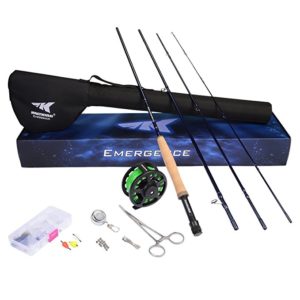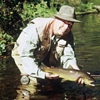BREAK OUT THE FLY GEAR!
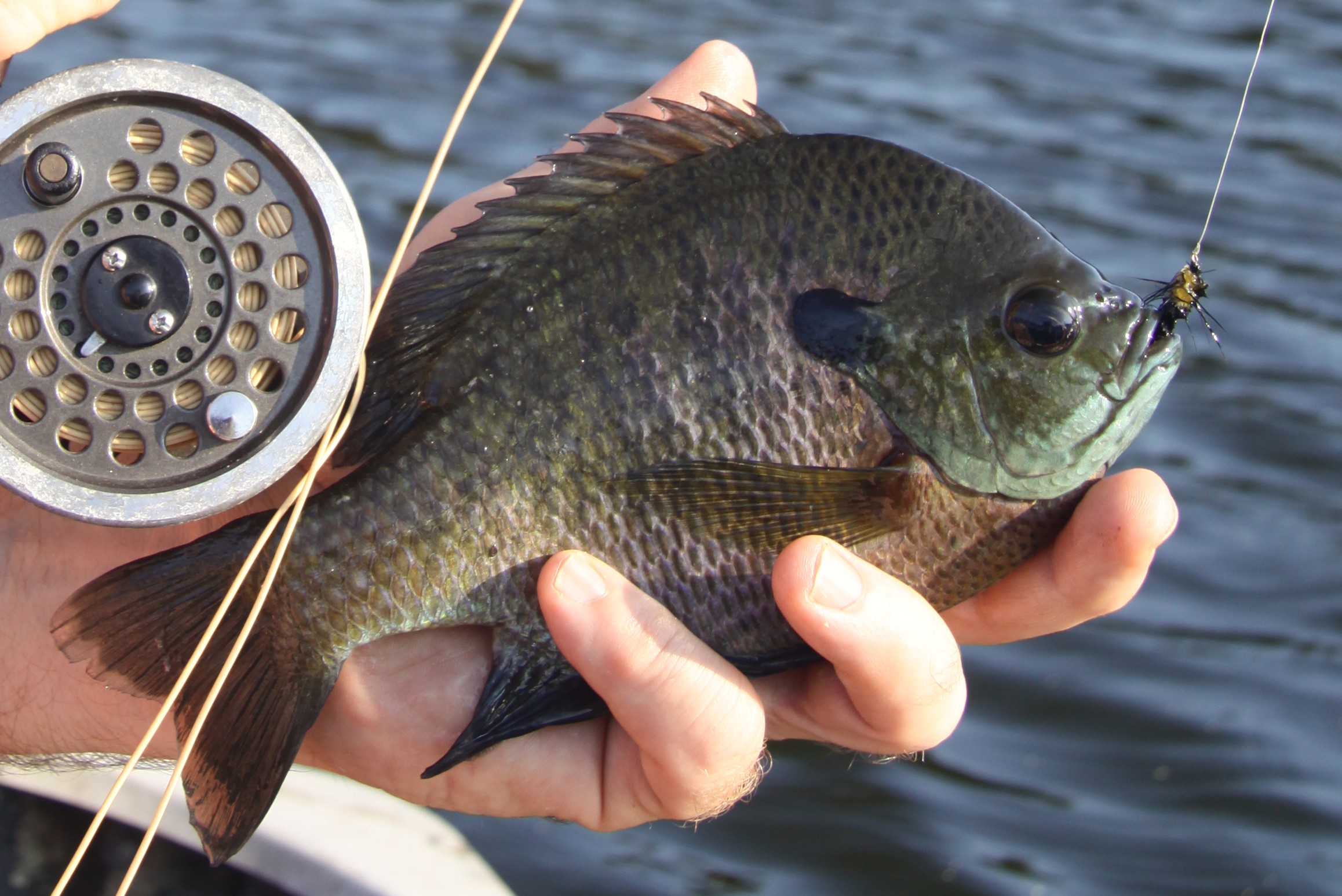
Bluegill and pumpkinseed panfish inhale small, dark-colored wet flies and nymphs throughout the month of May. The author also has a lot of success throwing bumble bee patterns. Photo by Felicia Scocozza.
Where to start? That’s the question that comes into play as May appears on the calendar page. For Northeast anglers the choices are many. On the salty side, fluke are now fair game, stripers and blues are tearing into freshly arrived bunker schools and the first dinner plate-sized porgies are beginning to show. That makes it hard to imagine the sweeter side not being overshadowed this month. After all, black bass are out of season on most waters, the more aggressive trout have already been culled, and walleye are gravitating toward a night bite.
Yet to look past Northeast freshwater opportunities in May is to forfeit some of the most fun fishing of the year. Crappie, bluegill, pumpkinseed and yellow perch are on patrol in just about every lake and pond, trout are still available if you take the time to work at it, and carp – some topping 30 pounds are hungry both before and after their spawn. Even those elusive walleye are willing if you are ready to put in the time.
I’ll get pretty serious with black bass come June, so for May I like to fool around on the water and simply enjoy myself. In addition to a solid bite, I’ve come to cherish this stretch for the lack of freshwater competition along the coast. With the briny awakening from its cold-water slumber, most local anglers rush to the bays and inlets in pursuit of all species salty. That leaves my favorite ponds, lakes and streams largely unpressured. That’s a pleasure of which I take full advantage – especially when it comes to fly-fishing possibilities.
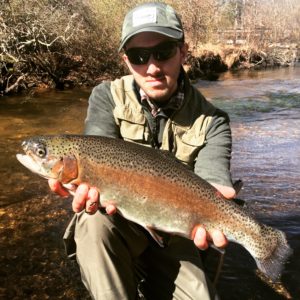
Not all trout are tiny stockies. Matt Broderick drilled this pretty rainbow at Connetquot River State Park Preserve in Oakdale, NY. Photo courtesy of Matt Broderick.
With largemouths still out of bounds on many waters in the tri-state area, May is a great month to switch gears and put your fly-casting skills to the test – especially on smaller rivers, lakes and ponds where water temperatures warm up first. The weeds are still relatively tame at this point, and with fishing pressure low on most fresh waters, the fish don’t need to be skittish. That makes them the perfect target for a well-placed pattern. Before the month is out, I’ll have challenged myself to catch trout on nymphs and dry flies, panfish on wet flies and spider-leg poppers, pickerel on streamers and, perhaps, carp on corn imitations or small shrimp patterns.
If you’d like to take sweet water fly-fishing to the next level, start with the trout. They’ll be most active early in the month. If the waters are still cold, small, dark-colored bead-head Wooly Buggers and Stone Fly nymphs will work in rivers and streams if presented on a dead drift. In the ponds, unweighted Gold-Ribbed Hare’s Ear nymphs rule the day. As May progresses past its midpoint, you’ll find dry fly patterns beginning to work in the early, then latter, afternoon. Try a size 12 – 18 Bivisible, Elk Hair Caddis or, my favorite May trout pattern, the Blue Dunn.
On the panfish front, size 10 Zug Bugs and size 12 black Wooly Buggers are great choices soon after Mother’s Day, giving way to size 10 McGinty Bumble Bees as the waters continue to warm. Keeping in mind that even mid-May can still be relatively cool in some areas, you’ll need to work these patterns very slowly at first, keying on deep pockets just beyond spawning areas and imparting almost no action at all to the fly at the end of your line. Once the water heats up a bit, a quicker pace will work with bigger ‘gills, pumpkinseed and crappies. Choose darker patterns through mid-month, progressing to lighter choices and, finally, blue, yellow, red or white rubber-leg panfish poppers as June looms on the horizon. For action with yellow perch, look for open patches of deeper water and work small white streamers or Mickey Finn patterns with a herky-jerky action and plenty of lifts and drops. The same approach, but tight against phragmite edges, is the way to connect with pickerel and even pike – and a sure bet to lose a few flies so bring along extras.
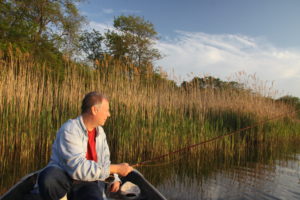
Working phragmite edges produces a mix of panfish, pickerel, pike and, where in season, largemouth bass. Photo by Felicia Scocozza.
Have you ever caught a carp on a fly? It’s possible but quite a challenging feat. Stopping a big carp that’s pushing a wake up against the far shore is no easy task – and it’s less than half the battle. The most frustrating part is getting one to take a fly in the first place. The trick is to get close to a pod of fish and gently drop a bright yellow corn fluff or unweighted pink shrimp in their path. Strike at the slightest twitch of the line after your pattern settles near to the bottom and hold on tight as the big minnow powers away. It’s an awesome accomplishment to hook and land one of these bruisers with a fly rod but don’t be surprised if it takes several trips before you get that first strike.
As for largemouth and bronzeback fans, May does offer some opportunity. Open seasons vary by county and state – and sometimes by specific waters. A check of your local regulations should be your jumping off point. Late May, especially, can offer super surface action on shallow flats where allowed. Work weed lines, lily pockets and cove mouths with big rubber-leg poppers for the most action, or cast a large frog or mouse pattern in the hopes of hooking a hawg.
As for gearing up for fly-fishing, stop by an Orvis Fly Shop, your local tackle shop, or consider the new KastKing® Ascension Fly Rod; it comes with the reel, line and a neat carrying case all assembled and ready to cast. Better yet, it’s collapsible – and you don’t even have to remove the reel or unstring the guides – that means it’s easy to take along wherever you go. To view a cool video on this new combo, visit KastKing® here.
By Tom Schlichter
Use the LIKE button below to get notifications about new articles in your Facebook news feed!
